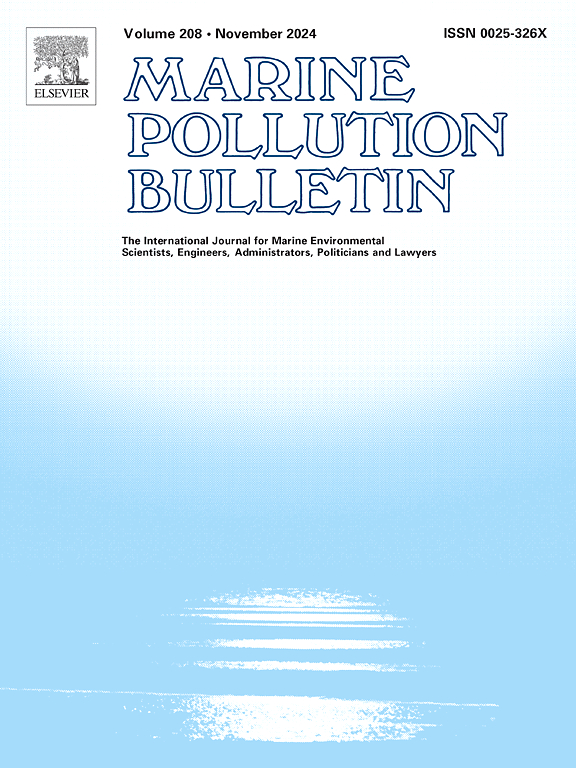河口蟹对低pH值的阶段依赖生活史、生理和行为反应
IF 4.9
3区 环境科学与生态学
Q1 ENVIRONMENTAL SCIENCES
引用次数: 0
摘要
海洋无脊椎动物的早期阶段很容易受到海洋酸化的影响。本文研究了低pH值对蟹蟹幼体发育的影响。我们假设,适应波动环境的Zoea I将比在稳定的近岸地区发展的Zoea II和III表现出更大的弹性。我们评估了pH值为8、pH值为7.5和pH值为6.9对换壳间隔时间、死亡率、耗氧量和游泳行为的影响。Zoea I耐低pH,发育和死亡率没有变化,尽管pH值为6.9时耗氧量下降。相比之下,Zoea II和III在pH为6.9时发育迟缓,死亡率较高,耗氧量降低。Zoea I在酸化条件下游泳没有变化,Zoea II和III在酸化条件下游泳速度和距离都有所降低。这些结果表明,Zoea II和III对低pH值更敏感,而Zoea I更具弹性。本文章由计算机程序翻译,如有差异,请以英文原文为准。
Stage-dependent life-history, physiological, and behavioral responses to low pH in an estuarine crab
Early stages of marine invertebrates are vulnerable to ocean acidification. We investigated low pH effects on larval stages of the crab Neohelice granulata. We hypothesized that Zoea I, adapted to fluctuating environments, would show greater resilience than Zoea II and III, which develop in stable nearshore areas. We assessed pH 8 -control-, pH 7.5, and pH 6.9 effects on intermolt duration, mortality, oxygen consumption, and swimming behavior. Zoea I tolerated low pH with no changes in development or mortality, though oxygen consumption decreased at pH 6.9. In contrast, Zoea II and III showed delayed development, higher mortality, and reduced oxygen consumption at pH 6.9. While Zoea I showed no changes in swimming, Zoea II and III exhibited reduced swimming velocity and distance traveled under acidified conditions. These findings show that Zoea II and III are more sensitive to low pH, while Zoea I is more resilient.
求助全文
通过发布文献求助,成功后即可免费获取论文全文。
去求助
来源期刊

Marine pollution bulletin
环境科学-海洋与淡水生物学
CiteScore
10.20
自引率
15.50%
发文量
1077
审稿时长
68 days
期刊介绍:
Marine Pollution Bulletin is concerned with the rational use of maritime and marine resources in estuaries, the seas and oceans, as well as with documenting marine pollution and introducing new forms of measurement and analysis. A wide range of topics are discussed as news, comment, reviews and research reports, not only on effluent disposal and pollution control, but also on the management, economic aspects and protection of the marine environment in general.
 求助内容:
求助内容: 应助结果提醒方式:
应助结果提醒方式:


